1. Wood Paneling on the Walls
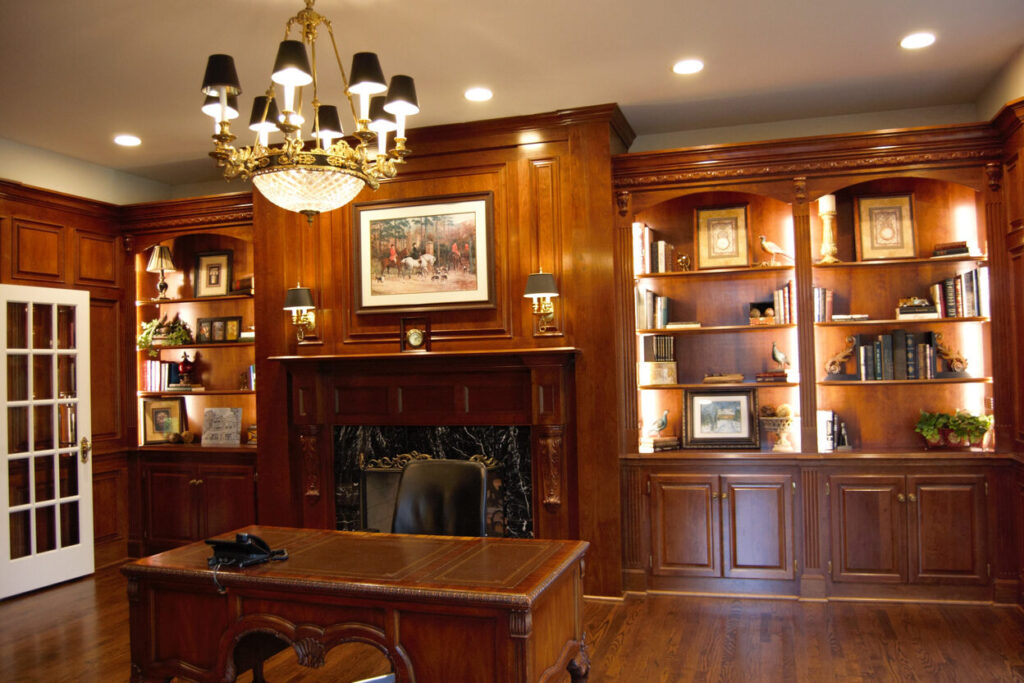
The 1970s living room was more than just a place to sit; it was a sensory time capsule defined by bold colors, bulky furniture, and a spirit of unapologetic coziness. Step back in time with us to explore the unmistakable sights, sounds, and textures that made every home of the decade instantly recognizable.
Almost every living room embraced sheets of faux-wood paneling that instantly darkened the walls. It wasn’t always real wood, typically being plywood or particleboard with a printed veneer, but it successfully gave the illusion of warmth and richness that families craved. This paneling often came in shades of walnut, pecan, or hickory, reflecting the era’s lean into earthy tones. It was initially seen as a stylish, low-maintenance, and relatively inexpensive way to update a room, a vast improvement over the plain paint of previous decades. Despite later becoming a retro punchline, for much of the decade, that unmistakable wood backdrop was a permanent and defining feature of family life, an unforgettable element in old holiday photos and home movies that provided a solid, warm anchor to the room’s design.
2. Shag Carpeting
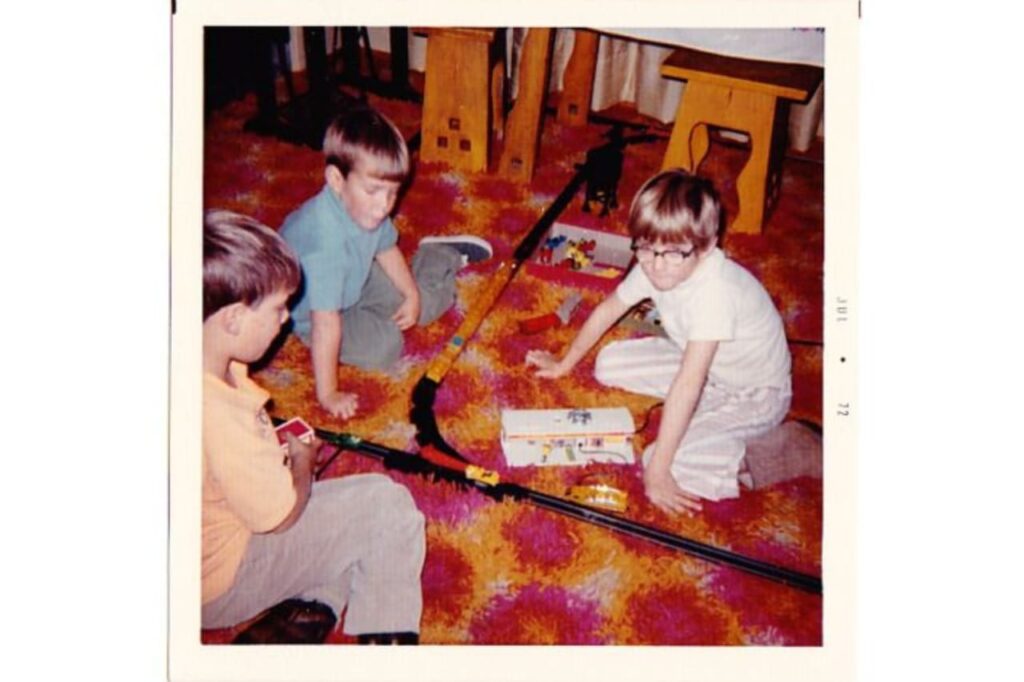
Wall-to-wall shag carpeting was perhaps the single most definitive ’70s style statement. Its long, loose fibers created a dense, deep pile that literally defined the “feel” of the room. This carpeting was not subtle; it came in the decade’s iconic hues: burnt orange, avocado green, and mustard yellow. While incredibly cozy to sit or lie on, the practicality of shag was its downfall. The long, deep fibers easily swallowed lost small items like coins, toys, and stray socks, and keeping it clean was a monumental chore. Standard vacuum cleaners struggled with the thickness, and the carpet tended to trap dust and odors, including the pervasive smell of cigarette smoke. Despite the maintenance nightmare, shag was peak style, embodying the decade’s carefree and plush aesthetic, making it an essential, defining vibe of the ’70s home.
3. Console Television Sets
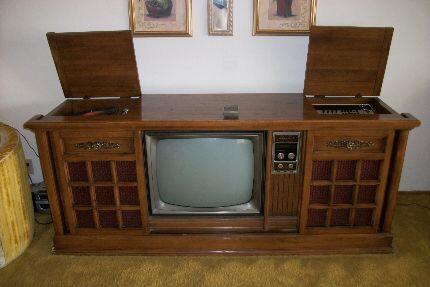
In the 1970s, the television was far more than a screen, it was a giant piece of wooden furniture, built as a bulky console that housed the electronic components. Families designed their entire living room around this centerpiece, with sofas oriented directly toward it, and kids often sitting cross-legged on the shag carpet right in front. These massive sets frequently featured faux-wood grain to blend in with the surrounding furniture and wall paneling. Remote controls were a luxury rarity, meaning changing the channel involved the physical ritual of walking up to the set and turning a large, loud click-knob tuner. While they were certainly not sleek or portable, their permanence and imposing size gave them a ceremonial quality, solidifying the console TV as the undisputed electronic hearth of the American household.
4. Vinyl Sofa Covers

To protect the significant investment of a new “good” couch, many families adopted the widespread, though uncomfortable, practice of wrapping their seating in thick, clear plastic slipcovers. This heavy, clear vinyl was the ultimate defense against spills, pets, and wear, ensuring the fabric underneath remained pristine for decades. Sitting on these covers, however, was a memorable, often negative, experience. They would squeak loudly with every movement, stick uncomfortably to bare legs in the summer heat, and often had a faintly recognizable chemical smell. For children, sitting on the covered couch was often a dreaded ordeal, especially when told to “be careful.” Yet, for parents, the squeaky, sticky vinyl was a sign of responsible homemaking, a guarantee that the furniture would literally last forever, perfectly preserved beneath its protective shell.
5. Ashtrays on Every Table

The prevalence of ashtrays in a 1970s living room was a stark reminder of the era’s casual acceptance of smoking, both among family and guests. Even in non-smoking households, it was considered basic hospitality to have several ashtrays readily available on every end table, coffee table, and shelf. These receptacles were often decorative, ranging from simple, weighty glass or ceramic discs to kitschy novelty shapes or souvenirs from vacation spots. By the end of an evening social gathering, it was common for multiple ashtrays to be filled, leaving the distinctive odor of stale cigarette smoke clinging to the curtains, upholstery, and especially the shag carpet. The ever-present ashtray was an essential, unspoken accessory, a ubiquitous symbol of a time when smoking was a relaxed, integrated part of daily home life and social interaction.
6. Avocado Green and Harvest Gold Everything
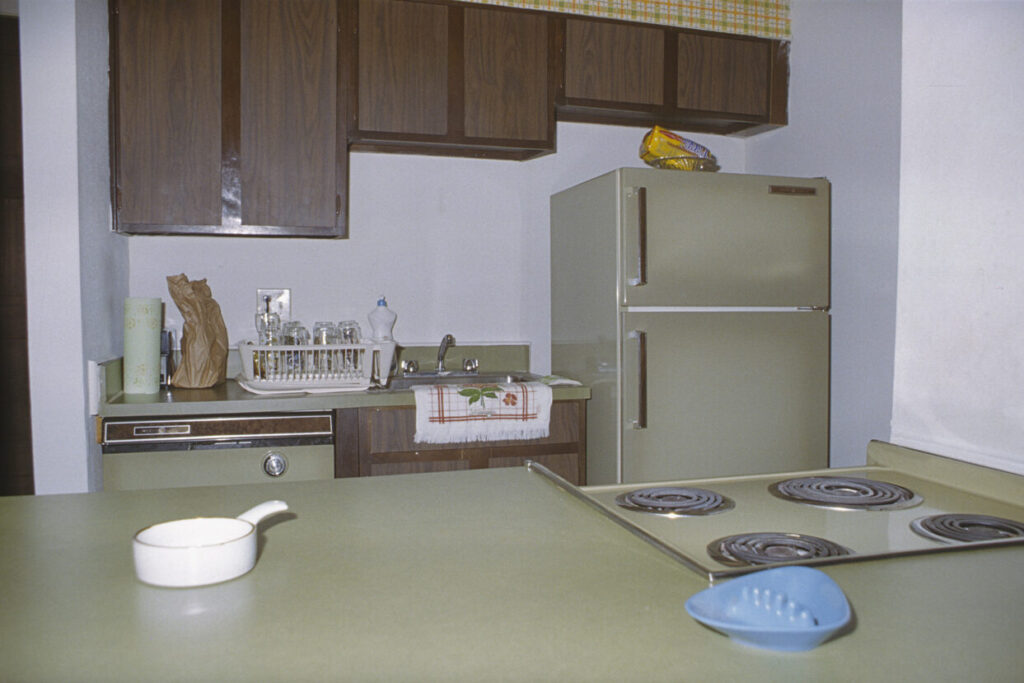
These two specific, earthy tones were the undisputed color palette obsession of the 1970s home. Avocado green, a muted, olive-like shade, and Harvest Gold, a warm, deep mustard or maize yellow, weren’t confined to just minor accents. They were the dominant colors for major household items, including kitchen appliances, bathroom fixtures, and, critically, living room elements like carpets, throw pillows, and even patterned upholstery. This fascination with the hues was linked to the era’s broader cultural interest in “natural” or “earthy” tones and a departure from the pastel colors of earlier decades. Today, these colors feel like the ultimate retro design joke, but in their time, nothing signified a modern, stylish, and up-to-date home quite like an abundance of Avocado Green and Harvest Gold elements, setting a distinctive, mellow mood.
7. Dark Colors Everywhere
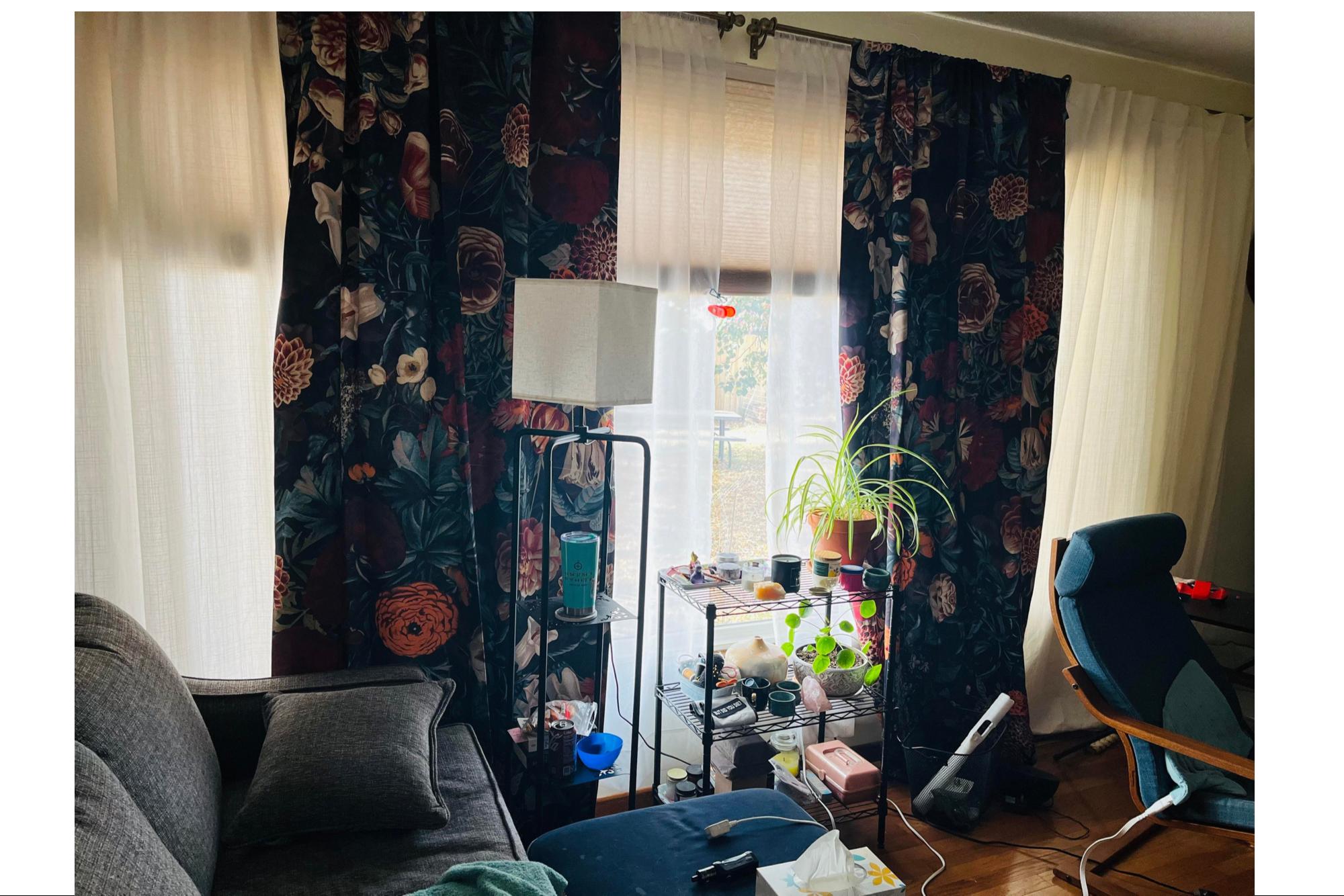
Beyond the iconic avocado and gold, the overall design ethos of the 1970s living room strongly favored a palette of deep, dark, and moody colors. The dominant tones were rich browns, earthy rusts, deep olives, and various shades of orange. This preference for heavy, saturated colors extended to all surfaces: the dark wood paneling, the thick, patterned upholstery fabrics, and the heavy drapes. The result was often a dimly lit, cave-like atmosphere, a deliberate contrast to today’s bright, open-concept spaces. Families perceived this as intensely cozy, intimate, and a sign of sophistication, giving the room a snug, protected feeling. This intentional darkness, achieved through a combination of color choices and dim lighting, defined the sensory experience of the ’70s interior, making it feel like a private, warmly enclosed retreat.
8. Heavy Curtains
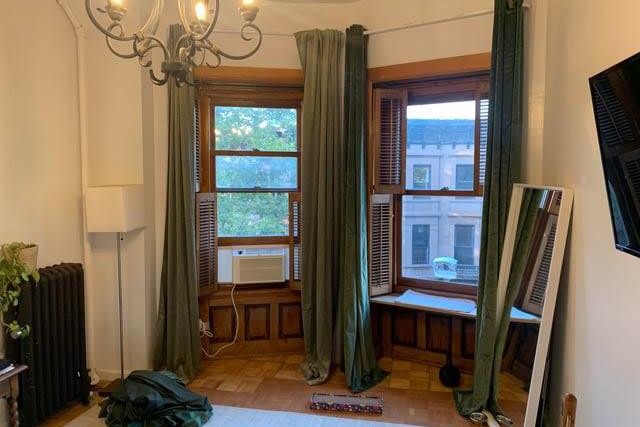
The windows of a 1970s living room rarely let in much natural light, largely due to the use of thick, substantial curtains. These were often lined for insulation, reflecting the period’s focus on energy efficiency, and typically hung from the ceiling to the floor, dominating the wall space. The fabrics themselves were often heavy and featured large, striking floral, paisley, or bold geometric prints, usually in the decade’s favored dark colors. These drapes served the dual purpose of blocking out both drafts and sunshine, effectively trapping indoor air, including the scent of smoke and cooking, within the room. The deliberate act of pulling them back during the day was a significant moment, a feeling of opening the private, dark sanctuary of the living room to the outside world, underscoring their function as a boundary marker.
9. Macramé Plant Hangers
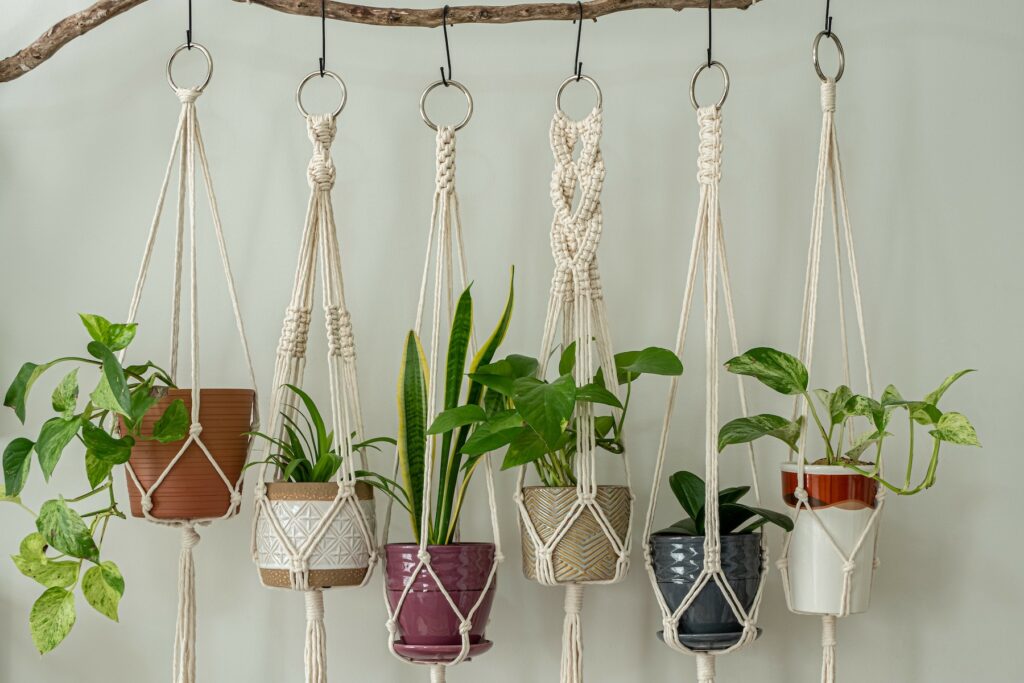
A quintessential touch of the 1970s “back to nature” and bohemian aesthetic was the presence of at least one, and often several, macramé plant hangers suspended from the ceiling. Macramé, the craft of knotting cord into intricate patterns, was a wildly popular DIY hobby of the era, and these hangers were a common handmade feature. They typically held popular houseplants like spider plants, ferns, or philodendrons, which often grew into dramatic, trailing green cascades. The soft, knotted texture of the rope added a handcrafted, organic element to the room, blending well with the other earthy textures like wicker and shag. These hangers would often sway gently with air currents, adding subtle movement and a pervasive jungle-like green feel, instantly communicating a sense of groovy, naturalistic style.
10. Crochet or Granny Square Afghans
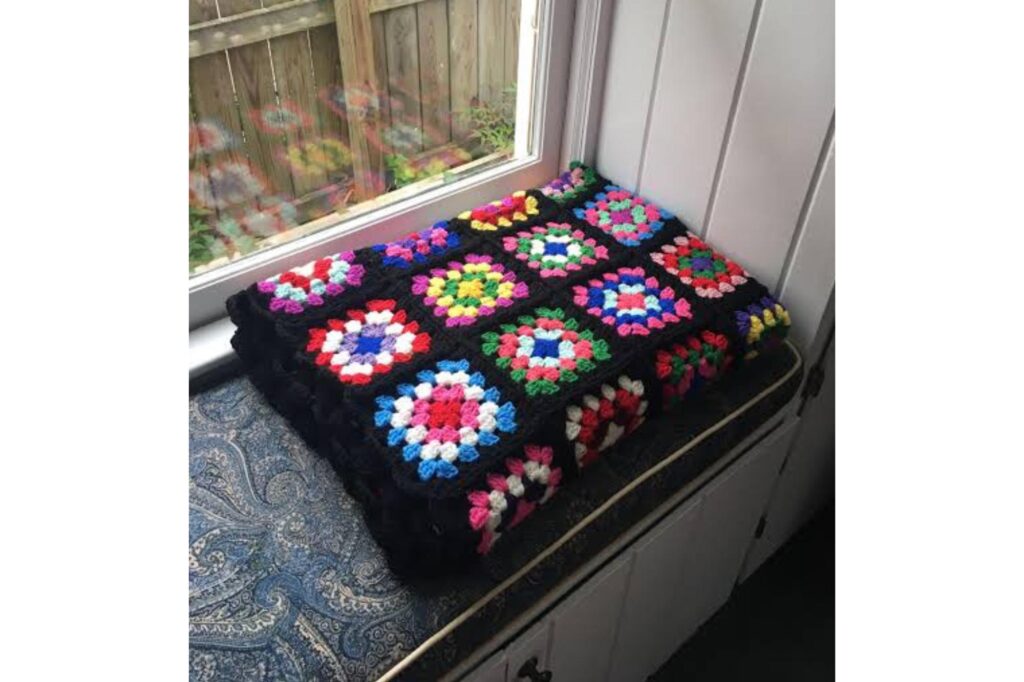
Adding a final layer of texture and warmth to the seating arrangement were crocheted afghans, which were almost always handmade, often by a grandmother or aunt. These blankets were a common fixture draped over sofas and armchairs, adding a splash of personal, homespun color. The most popular design was the “granny square,” which involved assembling numerous colorful, square-crocheted patches into a larger blanket, or afghans made with vibrant zigzag or ripple patterns. The colors of the yarn, which often did not perfectly match the furniture, ranged from bright jewel tones to the classic avocado and orange. Scratchy yet wonderfully warm, they were pulled out for chilly nights of TV viewing. These afghans were not just functional items; they were tangible symbols of family love, comfort, and the enduring craft tradition stitched into every cozy home.
11. A Stereo Console or Record Player
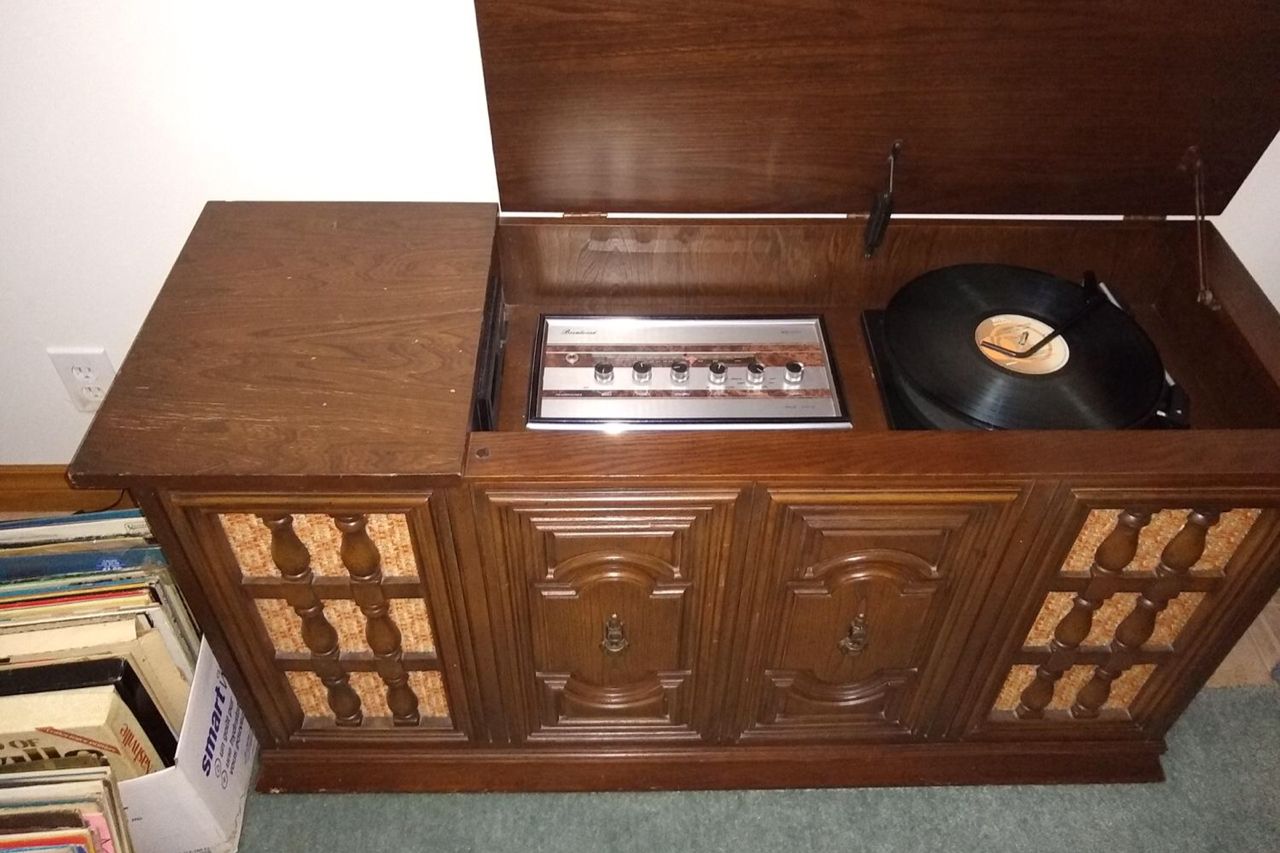
Before compact sound systems, the heart of home music was the stereo console, a large, imposing piece of furniture that was an essential living room staple. These cabinets were designed to be both stylish and functional, housing a record player (turntable), an AM/FM radio receiver, and often a dedicated storage space for the family’s collection of LPs (long-playing records). The entire ritual of listening to music, selecting an album, carefully placing the needle, and hearing the signature sound of a scratchy record starting, was a focused activity that filled the room. The sound quality was often robust, and the console served as another key focal point, making the act of playing vinyl a deliberate social or family event, essentially turning music into the central soundtrack of home life.
12. Lava Lamps
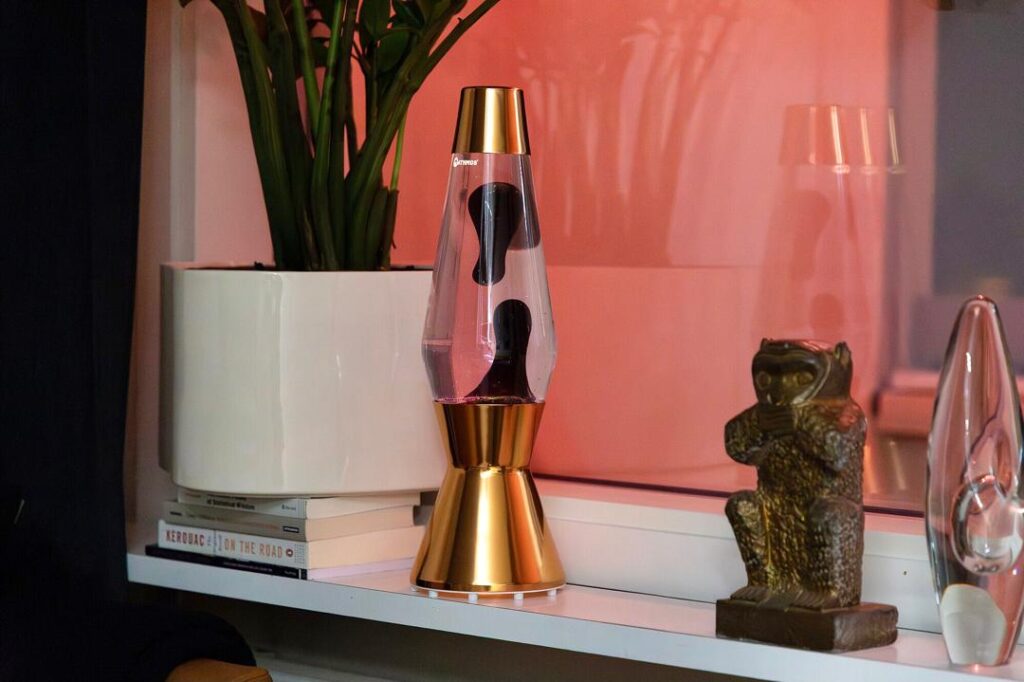
Few items captured the era’s fun-loving, groovy aesthetic as perfectly as the lava lamp. These mesmerizing novelty lamps featured a tall, tapered glass cylinder filled with a clear or colored liquid and a wax compound. When the light bulb base heated the container, the wax would melt, creating large, colored blobs that slowly floated up and down, mesmerizing anyone watching. The lamps often provided a dim, atmospheric glow in shades like orange, yellow, or blue. They were never bright enough for reading, but their sole purpose was to set a relaxed, psychedelic-tinged mood. Often placed on an end table or shelf, the lava lamp was a functional piece of art, a conversation starter that added a distinctive, funky highlight to any party or casual evening gathering.
13. Beaded Curtains
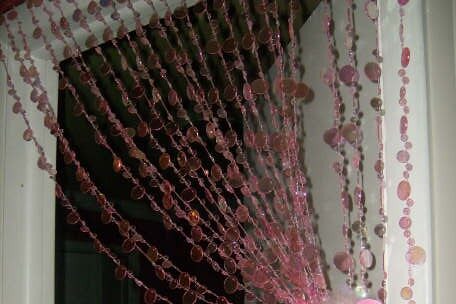
In some more bohemian or adventurous 1970s homes, traditional doors between certain rooms, such as the living room and a hallway or dining room, were replaced with beaded curtains. These were typically comprised of long strings of wooden, plastic, or bamboo beads hung close together on a rod. They added an element of visual interest and texture, but their function was purely aesthetic, offering zero privacy. Their defining characteristic was the distinctive, clacking sound they made every time a person walked through the doorway, creating an audible signal of movement. For children, the temptation to run their hands through the beads or “play” with the doorway was often irresistible, turning the practical divider into a playful, kinetic element of the room’s decor.
14. Rotary Phones
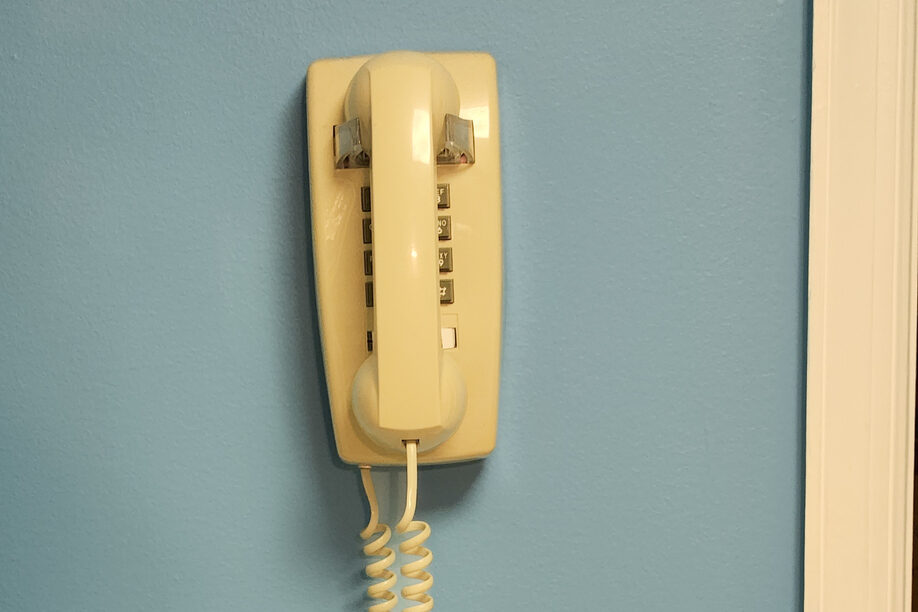
The concept of a cordless or mobile phone was science fiction, so the living room almost always featured a stationary rotary phone, usually sitting on a small table or dedicated shelf. The phone was attached to the wall by a long, coiled cord that frequently stretched across the living room floor, often becoming a tripping hazard. Making a call was a slower, more deliberate process: one had to manually spin the rotary dial for each digit, waiting for the distinct, rhythmic “whirr-click” sound as the wheel reset. The phone itself was often a heavy, durable piece of equipment, sometimes in the popular Avocado Green or Harvest Gold colors. Its presence underlined the fact that a phone call was an intentional, fixed-location event, a stark contrast to today’s instant communication methods.
15. Brown-and-Orange Everything
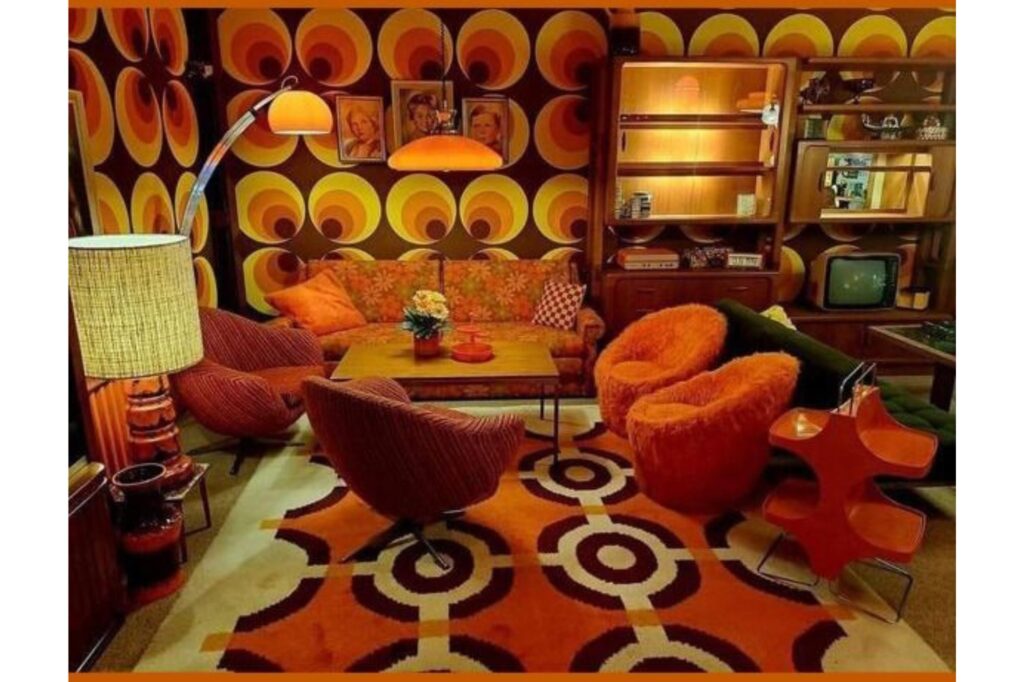
If Avocado and Harvest Gold were the individual stars, the combination of brown and orange was the foundational workhorse of the 1970s palette, particularly in the living room. It was common to see brown upholstery (like a velour sofa), offset by multiple shades of orange in the form of throw pillows, lampshades, and patterned accents like area rugs or art. The combination was meant to be earthy, warm, and autumnal, leaning into a natural, almost lodge-like comfort. This pairing was seen on everything from pottery to glassware and prints, making it one of the decade’s most recognizable and heavily used color schemes. While cheerful in its way, the sheer saturation of this color combination often gave living rooms a very heavy, dense look, a testament to the era’s deep-toned preference that later generations would joke about.
16. Giant Encyclopedias or Coffee Table Books
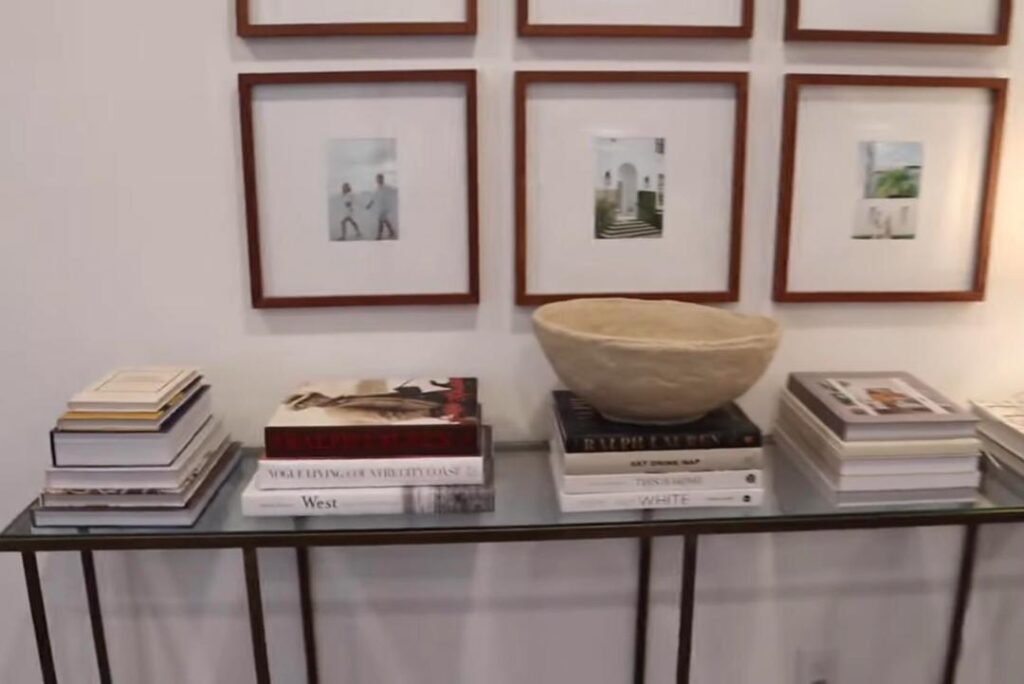
In the pre-internet age, the home library was a literal necessity and often part of the living room decor. A set of massive encyclopedias, like the World Book or Britannica, stood ready on a bookshelf, serving as the first reference for school projects and answering spontaneous family questions. Similarly, coffee tables were always adorned with oversized “coffee table books,” which were typically large-format, glossy volumes on subjects like art, world photography, or travel. These books were not merely reading material; they were decorative statements that added a perceived sense of culture and intellectualism to the room. Guests would idly flip through them, and children would often spend hours captivated by the images, making these hefty books a defining feature of the well-appointed ’70s sitting area.
17. Popcorn Ceilings
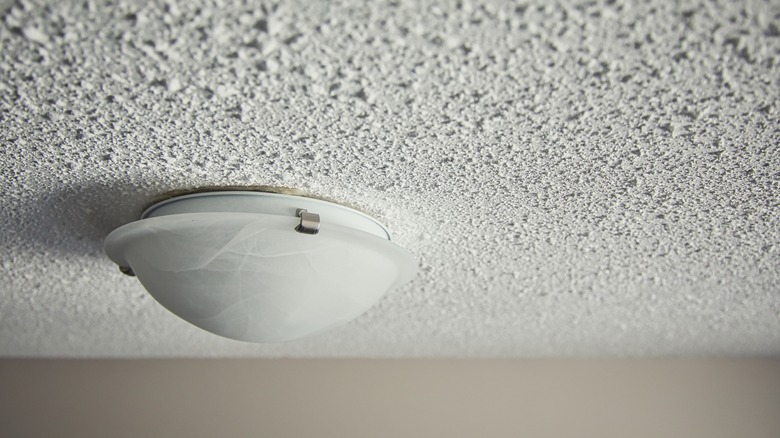
The bumpy, heavily textured surface known as the popcorn ceiling (also called an acoustic or stipple ceiling) was a near-universal feature in 1970s residential construction. It was popular for several practical reasons: it was inexpensive to apply, it was a fast way to hide imperfections in the ceiling drywall, and it was claimed to have minor sound-dampening qualities. The texture itself was created by spraying a mixture containing small granules onto the ceiling surface. Unfortunately, it became notoriously difficult to clean and, in many older homes, was later found to contain asbestos, a significant health hazard. Despite its controversial legacy, the rough, stippled overhead view was a defining, unmistakable architectural feature of homes built or renovated during this decade.
18. Incense Holders
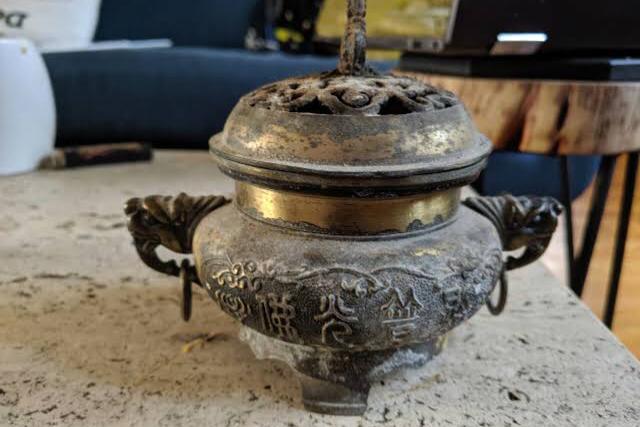
Reflecting the era’s counter-cultural and bohemian influences, the scent of burning incense was often a characteristic odor in a 1970s living room. Fragrances like sandalwood, patchouli, or jasmine would often linger in the air, frequently used to cover the omnipresent smell of cigarette smoke. A dedicated wooden or ceramic incense holder was a common item on tables or shelves. These holders were designed to catch the ash as the stick slowly burned down. The practice of burning incense was linked to a general trend toward Eastern spirituality and a relaxed, meditative lifestyle. Whether family members fully embraced the “hippie” vibe or not, the distinct, sweet, and often heavy smell of burning incense became an identifiable, atmospheric detail of the decade’s home identity.
19. Dark, Heavy Furniture
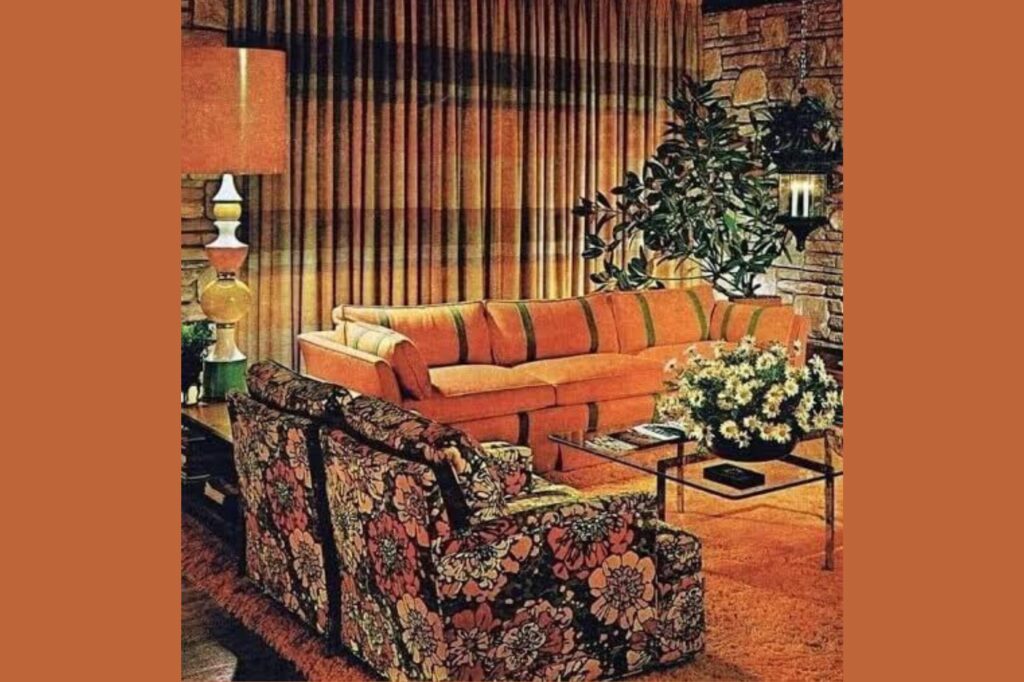
Living room seating in the 1970s prioritized sturdiness and overwhelming comfort over sleek design. The furniture was characteristically oversized, dark, and heavy, built to last for decades. Sofas and armchairs were often upholstered in durable, tactile fabrics like thick velour, corduroy, or bold, patterned florals, usually in the period’s favored dark browns, rusts, and olives. The underlying frames were typically made of solid, heavy wood. This furniture was an investment, designed to withstand the wear and tear of a large, active family. While contemporary design might favor lighter, modular pieces, the dark, solid weight of the ’70s sofa was an emblem of the era’s focus on durability and plush, sink-in comfort, a sensibility that saw many of these pieces passed down through generations.
20. Fake Plants or Plastic Flowers
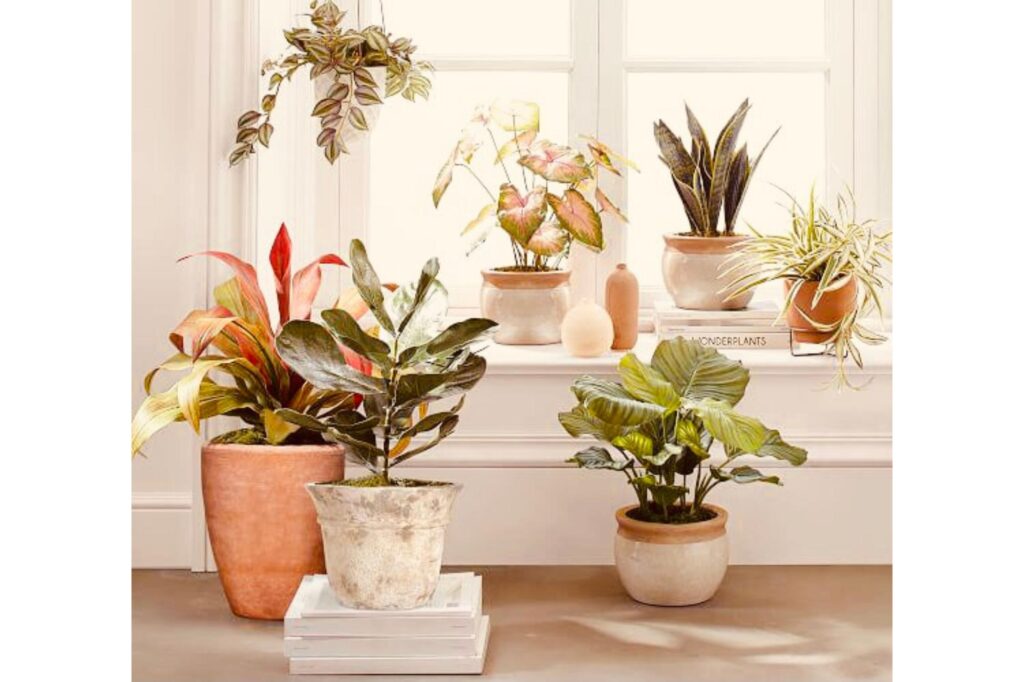
For those without the patience or talent for maintaining the macramé-hanging real plants, artificial plants and plastic flowers were a ubiquitous, maintenance-free solution. These items were seen as a necessary part of the ’70s emphasis on bringing “nature” indoors, even if that nature was entirely synthetic. Large plastic ferns, silk floral arrangements in avocado-colored vases, or small, faux-greenery arrangements filled empty corners, shelves, and end tables. From a distance, they added the desired green touch; up close, the plastic sheen and often dust-laden leaves were unmistakable. Their popularity stemmed from the ease of having permanent greenery. No 1970s living room was considered fully decorated without a potted plant, whether it required water or simply a dusting.
21. A Bar Cart or Built-In Wet Bar
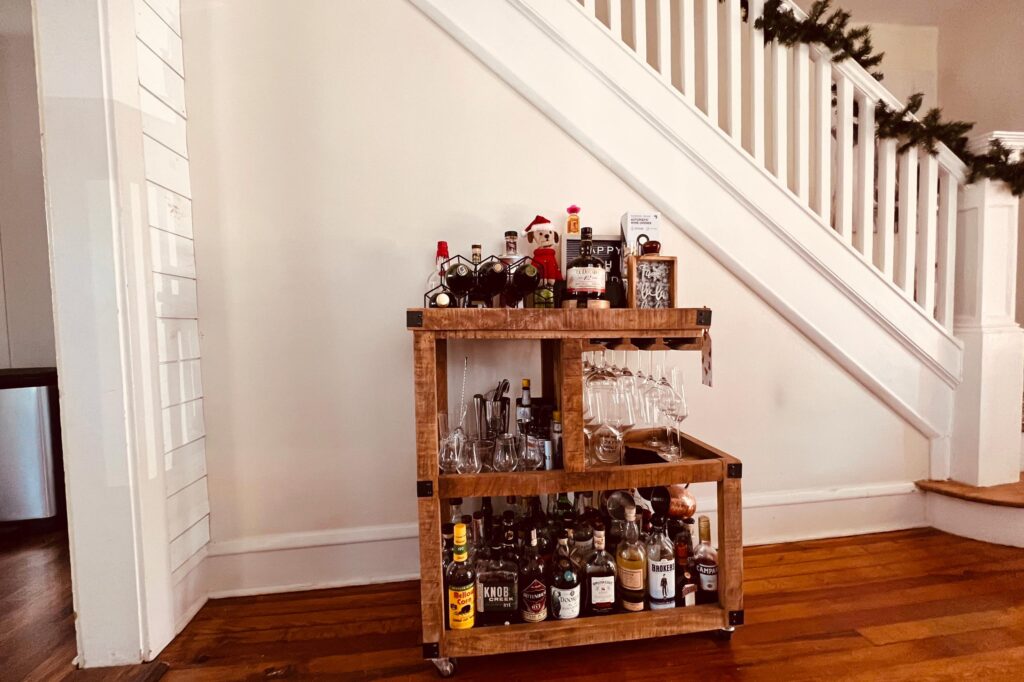
The 1970s saw a resurgence in cocktail culture and home entertaining, making a dedicated spot for mixing drinks a status symbol. Many living rooms featured a rolling bar cart (often chrome and glass or dark wood) or, in more elaborate homes, a full, built-in wet bar tucked into a corner. The cart or bar would be stocked with essential liquor bottles, cocktail shakers, and glassware. It represented an adult ritual and a touch of suburban sophistication. Kids were often strictly warned not to touch, but they keenly observed the grown-ups mixing drinks during evening parties. The bar cart was an important social fixture, signifying that the space was equipped for entertaining and was a subtle, yet potent, symbol of adult leisure and hospitality.
22. Ceramic Figurines and Knickknacks
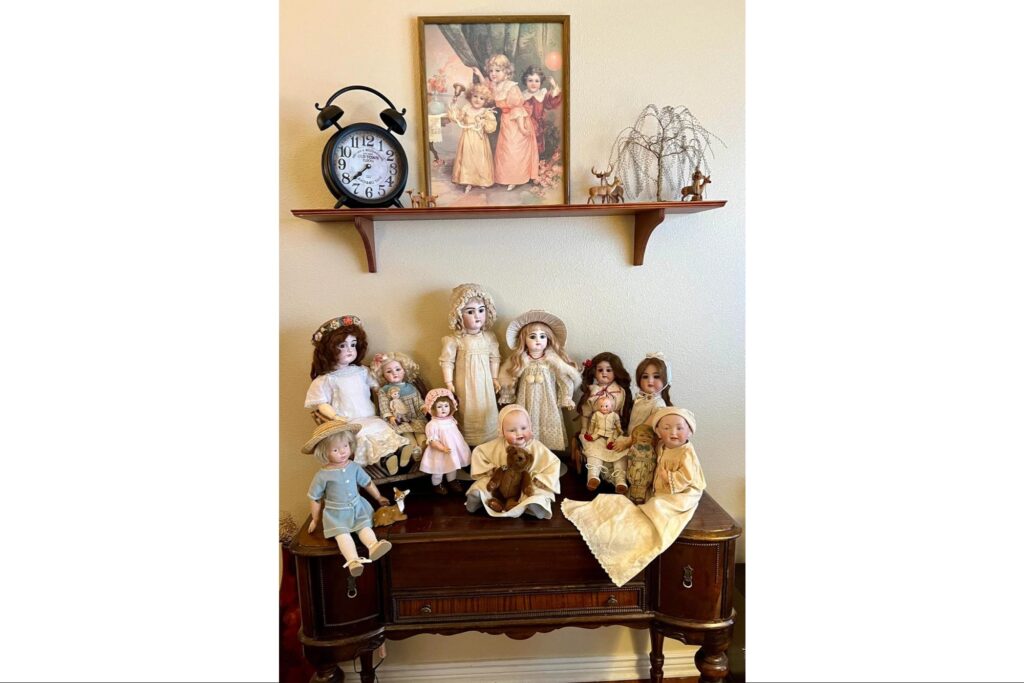
The surfaces of the 1970s living room, end tables, mantels, and shelves, were rarely bare; they were home to a vast collection of ceramic figurines and general knickknacks. These items included porcelain dolls, kitschy animal statues, sentimental souvenir plates from family vacations, or novelty ceramic clowns. These collectibles were not randomly placed; they were proudly displayed as conversation pieces and memory markers, telling a story of the family’s travels, gifts received, and personal interests. While they required constant dusting, families valued the personal touch they added to the home. The sheer density and variety of these small, breakable objects made for a cluttered, lived-in feel, a clear contrast to modern minimalist aesthetics.
23. Wicker or Rattan Accents
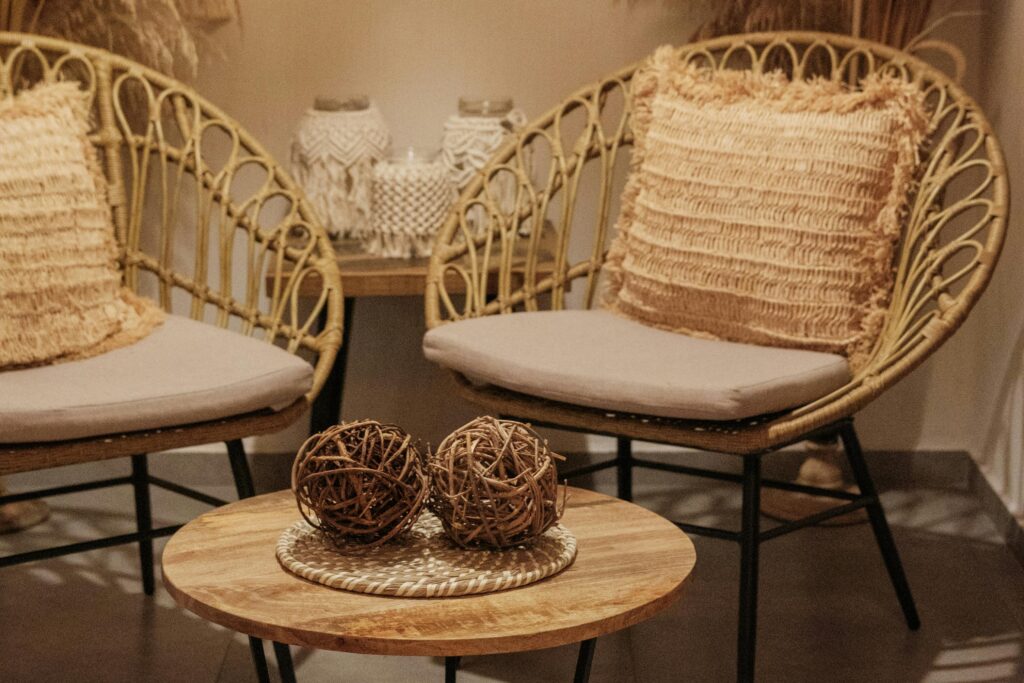
To counterbalance the heavy, dark furniture, elements of wicker or rattan were often introduced to bring a lighter, natural texture into the room. This could be in the form of a light-weight side chair, a magazine rack, a hanging basket, or a large decorative chest. Wicker, made from woven plant material, fit perfectly with the era’s embrace of earthy and handmade materials, offering a tactile contrast to the smooth vinyl and heavy velour. Though these pieces were often fragile, squeaked loudly when sat upon, and could be easily damaged, they provided a breezy, relaxed, almost sun-room feel. The texture of wicker was another key element that completed the ’70s naturalistic aesthetic, blending seamlessly with the macramé and the deep earth tones.
24. Wall-to-Wall Mirrors
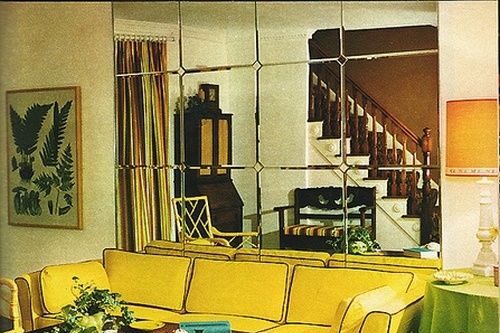
In a bold and popular design move of the decade, some living rooms featured entire walls covered with mirrors. This choice was purely aesthetic and dramatic. The mirrors were installed to reflect light, making the often-dark rooms appear significantly larger and adding an undeniable, sometimes overwhelming, sense of space. To heighten the effect, the mirror glass was occasionally tinted a smoky bronze or a soft gold, giving the reflection a warm, disco-era glamour. The result was a startling experience for guests, who would constantly catch their own reflections or those of others during conversations. While now remembered as one of the ’70s most daring and reflective design statements, at the time, it was considered the height of modern, flashy interior chic.
25. Curio Cabinets
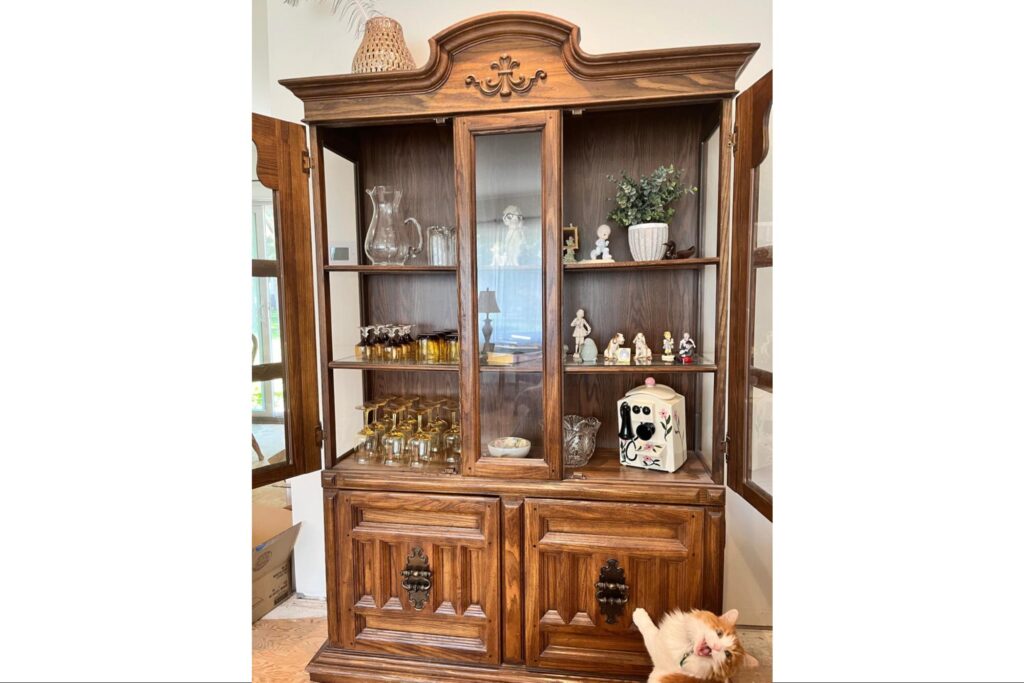
A glass-fronted curio cabinet was the ultimate showcase of a family’s treasured possessions and a focal point of living room identity. These tall, often narrow cabinets were designed specifically for display, housing collections of fine porcelain figurines, sentimental heirlooms, valuable trinkets, or delicate souvenirs. The glass panels protected the items while allowing them to be admired. The curio cabinet was more than just storage; it was a weekly-dusted, brightly lit (often with small interior lights) declaration of a family’s pride, history, and accumulated wealth of memories. It served as a formal, visible catalog of identity, making it one of the most important centers of conversation and memory in the 1970s living room.
The ’70s living room wasn’t just a collection of objects; it was a deeply textured, highly personal universe built for family life and enduring comfort.
This story 25 Things You’d Almost Always Find in a 1970s Living Room was first published on Daily FETCH


